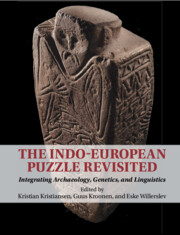Book contents
- The Indo-European Puzzle Revisited
- The Indo-European Puzzle Revisited
- Copyright page
- Contents
- Figures
- Tables
- Contributors
- Preface
- Introduction
- Part I Early Indo-European and the Origin of Pastoralism
- 2 The Yamnaya Culture and the Invention of Nomadic Pastoralism in the Eurasian Steppes
- 3 Yamnaya Pastoralists in the Eurasian Desert Steppe Zone: New Perspectives on Mobility
- 4 Proto-Indo-Anatolian, the “Anatolian Split” and the “Anatolian Trek”: A Comparative Linguistic Perspective
- Part II Migratory Processes and Linguistic Dispersals between Yamnaya and the Corded Ware
- Part III The Cultural and Linguistic Significance of Bell Beakers along the Atlantic Fringe
- Part IV The Bronze Age Chariot and Wool Horizons
- Part V Kinship Systems, Marriage, Fosterage, Free, and Unfree
- Concluding Reflections
- Index
- References
3 - Yamnaya Pastoralists in the Eurasian Desert Steppe Zone: New Perspectives on Mobility
from Part I - Early Indo-European and the Origin of Pastoralism
Published online by Cambridge University Press: 29 April 2023
- The Indo-European Puzzle Revisited
- The Indo-European Puzzle Revisited
- Copyright page
- Contents
- Figures
- Tables
- Contributors
- Preface
- Introduction
- Part I Early Indo-European and the Origin of Pastoralism
- 2 The Yamnaya Culture and the Invention of Nomadic Pastoralism in the Eurasian Steppes
- 3 Yamnaya Pastoralists in the Eurasian Desert Steppe Zone: New Perspectives on Mobility
- 4 Proto-Indo-Anatolian, the “Anatolian Split” and the “Anatolian Trek”: A Comparative Linguistic Perspective
- Part II Migratory Processes and Linguistic Dispersals between Yamnaya and the Corded Ware
- Part III The Cultural and Linguistic Significance of Bell Beakers along the Atlantic Fringe
- Part IV The Bronze Age Chariot and Wool Horizons
- Part V Kinship Systems, Marriage, Fosterage, Free, and Unfree
- Concluding Reflections
- Index
- References
Summary
The Yamnaya culture of the Lower Don is a Bronze Age culture dated between 2900 and 2600 cal BC. Its population inhabited the Eurasian desert steppe belt, where their main subsistence activity was pastoralism. The Yamnaya population developed a distinctive economic model based on new principles of pasture rotation, landscape use, and individual mobility. The focus of this study is the analysis of the specific landscapes and geographical features of one of the Eurasian Steppe regions located between the Lower Don and Lower Volga regions, i.e. the Sal-Manych Ridge (Fig. 3.1); it includes the settlement pattern and economic model that the mobile Yamnaya pastoralists developed to adapt to this region, the resources of the steppes they exploited and the system of seasonal migration reflected in the mobility of individual Yamnaya groups.
- Type
- Chapter
- Information
- The Indo-European Puzzle RevisitedIntegrating Archaeology, Genetics, and Linguistics, pp. 34 - 41Publisher: Cambridge University PressPrint publication year: 2023
References
- 1
- Cited by



